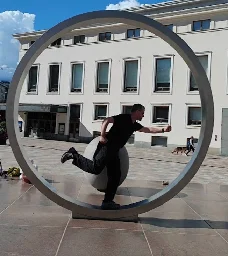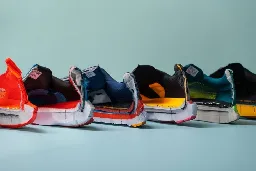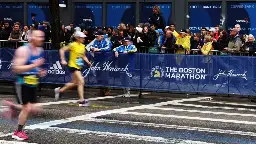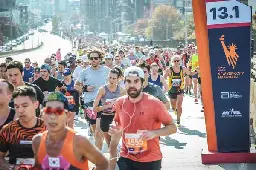I'd recommend Trainer Road paired with one of the cycling platforms -- you can do the workouts while "riding" on group rides or solo on a virtual cycling platform, e.g. Zwift (pay), IndieVelo (free), or MyWhoosh (free.) Zwift has more "carrots" and many, many more people and groups than other platforms.
I use IndieVelo, because I tired of Zwift's worlds and my favorite type of group rides went away. I found the routes, worlds, and real people quite engaging for a long time. I suspect you'd find Zwift more engaging than other platforms. Zwift has training plans for all sorts of goals.
IndieVelo is mostly bots, but there are some real people, and the bots are more like real riders than on other platforms. The interface is much more intuitive and easy to use than MyWhoosh (horrible interface) or Zwift.
The nice thing about Trainer Road is that it will give you a plan and change the plan and workouts as you go along. That auto-customizing felt good to me, and I made some fitness gains. Using Training Peaks requires that you add a training plan from someplace -- a coach or some free one you find. I didn't use a coach and felt like it was dull and clumsy. Other people love it.
Here's today's: https://maclook.substack.com/p/52-weeks-52-half-marathons-stage-5f8 around Lisbon, complete with the famous, yellow trolleys.
Here are some Hansons training plans for marathon and half-marathon:
I hadn't heard of the Hansons Method either. Last year, I started two runs a day once or twice a week. Unsurprisingly, it was easier on my body than running the same distance continuously. And I didn't feel as fatigued over all as my weekly mileage increased. My form was better, too.
But as to the big questions: Did I have as much endurance? Was I faster? I really don't know. I wasn't significantly slower.
The Hansons Method
https://www.runtothefinish.com/hanson-marathon-training-method-review/
Consider this your Cliff Notes version of Hanson running plans overall. These are the key concepts of the Hanson Method for half marathon and marathon training:
-
High mileage -
6 days of running -
Speed emphasis early in the training plan -
No planned cross training – in fact, they seem to do very little strength training -
Cumulative fatigue – “The development of fatigue through the long term effects of training which results in in a profound increase in running strength” -
3 “SOS” (Something Of Substance) workouts per week–speed work, tempo run at goal race pace and long run -
Longest run is 16 miles for most people
Obviously you may have heard of this training program thanks to the incredible success of Desi Linden. She gives them a lot of credit, but also noted that she reached a point where this wasn’t the best option for her any more
In today’s example of “this is why I blog”: as I implement Zone 2 training for doing distance running again I was lamenting not having done so for my 2013 marathon training. According to my race recap post it turns out I did implement Zone 2 training. Well, I thought I had anyway. Looking back over...

"[A]s I implement Zone 2 training for doing distance running again I was lamenting not having done so for my 2013 marathon training. . . I thought I had. . .. Looking back over the data however it is pretty clear that I did not."

pfernandes@mastodon.social is running, writing, and photographing his weekly half marathons around Portugal and Spain. The photos are lovely; the routes and descriptions make me want to hop on a plane to Lisbon.
Living at 60 degrees north, the March increase in sunlight is a big deal. We'll get a renewed ~150 minutes, stretching just 9.5 hours of daylight to 12. In just a few weeks! To match this march of time, and to celebrate the sunny increase, I'm determined to run 150 miles (~240kms) between March 1 an...

From Chris Toepker
Worldwide #March150 - let's Break Impossible, together
Living at 60 degrees north, the March increase in sunlight is a big deal. We'll get a renewed ~150 minutes, stretching just 9.5 hours of daylight to 12. In just a few weeks!
To match this march of time, and to celebrate the sunny increase, I'm determined to run 150 miles (~240kms) between March 1 and 31. Maybe you'd like to do something similar? Try 150kms (~93 miles)? Or 150 minutes in the gym? Or, if you're like Michael, breaking 150 boards in your martial arts practice?
Of course, the increase in daylight is for those of us in the northern hemisphere. If you're waving goodbye to that daylight across the global south, #March150 is still for you!
Who's with me?!
If you'd like to join in, or just follow along, we've created a WhatsApp Community: https://chat.whatsapp.com/HkI8zY4eVJu3OUkVmxdwox
I admire athletes who can do amazing feats, but this seems crazy. Crazy, as in, someone should have stopped her from continuing.
Thank you! Thank you!
That stuff is great! Put it on twice yesterday and can walk without that stinging pain that usually greets my first steps this time of year. The cracks aren't gone yet, but I'm optimistic.
I don't have thick calluses but I get the same thing every winter. I use Cetaphil cream twice a day. No help at all.
Disclaimer: Due to the vast variety of running shoe foams currently availab

I didn't know there was all that much difference in shoe foams.
https://www.teesche.com/nycmarathon
I just watched this. I was surprised at how good it is. Dealt with some serious issues and was funny. Really enjoyed it. Thanks!
One surprising thing on that list: A movie about my HS x-country team! Not my year but didn't know there was a movie about it at all.
I recalled one . . . silly and not on lists: Run Fatboy Run
There's a plethora of cycling movies . . . What about running movies? The only one I can think of is Chariots of Fire.
Very true! I suffered in the heat. Now, I dawdle before facing the "cold" 60 degree mornings!
Forty some miles. With strides and some interval work. Felt good. Made me happy!
A Case for Fallow Seasons
"As someone inclined to lament single unplanned days off from training, stories like those of Jim Ryun and Bernard Lagat rattle my sensibilities. They are good reminders that extended rest is productive. We cannot infinitely accrue fitness without stepping back."
Sensible advice.
Just curious . . . how do you maintain that much mileage in the winter, and for that matter, in the summer heat?
(3:10 would be very fast for me. )
This was a surprise to me:
"While many newer distance runners tend to focus on flashy long runs, the distance of the longest run was not strongly correlated with a BQ. Comparing BQ runners and all other athletes, the distance of the longest run was 20 to 22 miles across each marathon. But, the base mileage was higher for BQ runners, bearing in mind that base volume matters more than the distance of any long run. BQ runners at CIM averaged 65 miles during their peak week, while the rest of the field averaged 50 mpw. Similarly, Chicago BQers averaged 57 miles during peak week, compared to the rest of the field’s 41 mpw peak week."
We looked at a ton of data from last year’s fall marathons to see what Boston Qualifier (BQ) runners did differently in training and racing

"I]f you’re searching for an elusive BQ, here’s what the data show: slow your runs down, choose your course wisely, shoot for a negative split, and remember that practice makes perfect. It may take a couple of marathons to get it absolutely right, but that experience will be invaluable."
Obviously, I need to change my name to Kip Something!
Pretty cool.
How would one go about this? Serious question. Are there sites with lists? Are there things to avoid?
I hate taking time off. Even a pre race taper is hard.
But you can get past overtraining by reducing your volume and ramping up slower.
This is a real achievement. Congratulations!
An increasing number of elite distance runners don’t wear activity tracking or GPS watches. They think they are better athletes because of it.

"[Heather MacLean, an Olympic 1,500-meter runner] realized her watch was draining the fun from her runs. It was especially apparent to her during a low-key stretch when she was simply trying to build fitness.
I hated that every run I went on, I felt like I had to check my pace and my distance and whatever else,” she said. “So I just decided that I was going to lay off it for a while and switch to a regular watch.”
She never went back. MacLean, 28, who now wears an Armitron Dragonfly that she said she picked up for $10 at Walmart, acknowledged that there were certain workouts when a GPS watch would come in handy, like when she did a tempo run by herself. (Tempo runs are faster than easy jogs, and frequently run at a prescribed pace.) But Mark Coogan, her coach, has long prioritized effort over pace, and MacLean logs her training in minutes rather than in miles.
“I know I’m at the elite level now, so not everything is going to be joyful,” MacLean said. “But when there are things that bring me a lot of joy, I’m going to invest in them. And one of those things is the ability to avoid focusing on my pace during my runs.”
Without the pressure of feeling as if she needs to account for every mile — or, perish the thought, post her workouts for public inspection on Strava, the exercise-tracking platform — MacLean has also gotten better about listening to her body. She has no qualms about bailing on an extra workout if she is feeling beat.
“And I’ll tell Mark that I’m going for a walk instead,” MacLean said. “And he’s like, ‘OK!’”
https://www.nytimes.com/2023/09/16/sports/gps-watches-professional-runners.html?unlocked_article_code=GVDhDMsA9gjchKt2W4QjTwSM2VxC23YP7ZSRi-lUn1B5OwlIumJwgRzZxmQz8o6Edm_7pQBv20ecwzndCmSqQqv_pfCvBIMlR7aAM8sSKp5Gqh-kaUyzAP3tjQ2Dc5T7V3YrtH6-SZMcvMjXwhCl-uYizHqLTsCgPo8M0131zR4zD0iV6wXqNQxoUaYqqwzrFppVOXjTxtWHsa3lqIhwzwkmPC8xHBLvqrLjr3-I_lUXhyLt1vtOplb4_Fy_ziYTOACY1HQhNbqVK2OpnJny38ZpZTer5TFasTB2RNvTQw5qdb9aFoMtPSBx2uVBjzpUdt43zlKQQuYNTipurMJGei49JsIJvSZlPw&smid=url-share
The qualities that drive many ultra athletes to succeed can also be their downfall if left unchecked. One study dives into the complexities of ultrarunners and exercise dependency.

Report of a study in Trail Runner about exercise dependency. From the article:
>The criteria used to evaluate exercise addiction include Salience, which refers to prioritizing exercise over other obligations; Conflict, which arises between exercise and responsibilities; Mood Modification, using exercise to enhance emotional well-being; Tolerance, requiring more exercise to achieve the same mental benefits; Withdrawal, leading to negative emotions when unable to exercise; and Relapse, returning to excessive exercise after reducing activity.
Interesting. We often have conflicts around our house about the time I spend running and recovering from running. And I definitely use running to help myself stay positive.
What do you guys think?
A comic about eating.

This made me laugh. I've always wondered!
Has anyone used a Mangene HRM? Or a Mangene anything? How was it?
It’s the only reasonably priced HRM (except for Wahoo, which I’ll never purchase again) available where I am for the next couple weeks.
